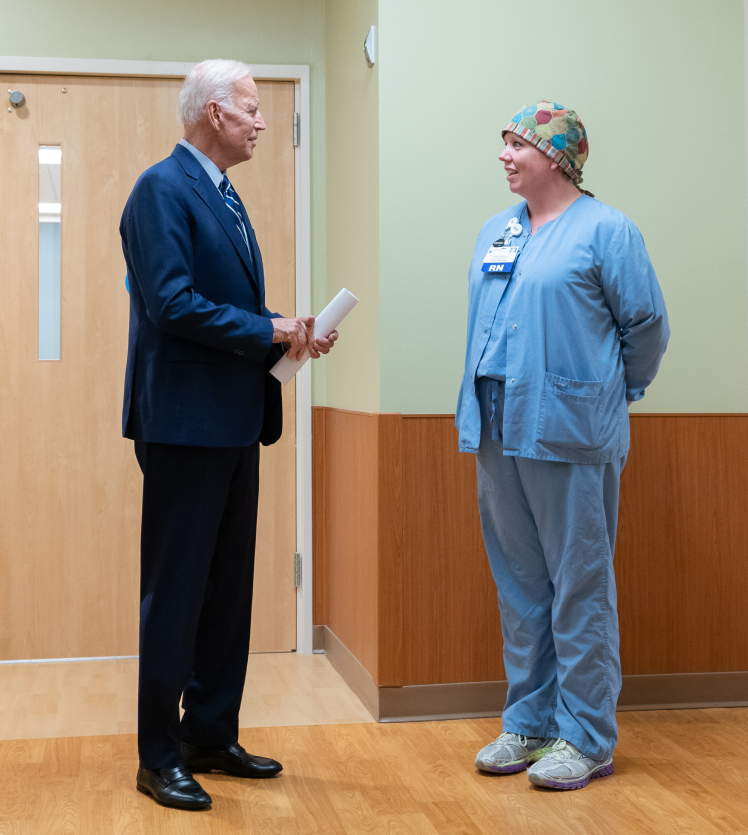An aging US population brings unique challenges to urologists and the urology workforce in general. As the average age of the population increases, this means that the frequency of urologic diseases and need for urology-related treatments also increases, and it is having an effect on the industry in general as demand increases. These demographic changes in the United States are in turn changing the demands on the urology workforce, creating a need by professionals to have the latest data, research, education, and advocacy for a changing industry.
With the findings published in the American Urology Association’s 2020 census, along with comparisons with their previous publications, we can form a clear picture of what the urology workforce and industry has been through in the past, what it is currently dealing with as of the 2020 publication, and we can also infer educated predictions about the future to anticipate what urologists and urology professionals will need to prepare for in order to meet the growing demand for urology care.
Here is a summary of some of the key findings of the AUA’s 2020 census:
Read More
Topics:
Urodynamics Testing,
urodynamics,
urodynamics staffing,
incontinence,
clinical operations,
urology,
urodynamics service provider,
Medical Practice Operations,
Uroflowmetry,
UroGynecology
Urinary incontinence can provide health care professionals with a challenge that may seem like it requires surgery when there are in fact a range of nonsurgical and even non-pharmacological options that can be employed first. To experienced urologists, this will be apparent, however other healthcare professionals who do not have a full working knowledge of urodynamic testing along with urinary incontinence treatment options may choose surgery or medication when there are many steps that can be taken and explored before resorting to more invasive options.
An Overview of Urinary Incontinence
Read More
Topics:
Urodynamics Testing,
urodynamics,
urinariy incontinence,
incontinence,
clinical operations,
urology,
urodynamics service provider,
male urodynamics,
UroGynecology
Whether you are an administrator, owner, or someone who is involved in some way with the running of a medical practice, you are likely going to already know about both asset-light and asset-heavy medical practice designs.
If you are, however, unfamiliar with these terms, then knowing the difference between them can be extremely helpful in weighing up how to design a medical practice and where capital should be allocated.
An asset-heavy medical practice is one with a large amount of capital invested in equipment, the property and building where the practice is located, employees (with a large number of full-time employees), and essentially owns a wide range of assets that allow it to perform as many functions as possible.
An asset-light medical practice on the other hand is one that owns fewer fixed assets, with a minimized quantity of full-time employees that focuses more on using outsourcing vendors to provide patients with a full range of medical and diagnostic treatments.
Read More
Topics:
Urodynamics Testing,
General Urology Information,
Reimbursments,
Reimbursment Trends,
urodynamics staffing,
hospital operations,
clinical operations,
urodynamics service provider,
ObGyn Practices,
urodynamics profitability,
Medical Practice Operations,
Urology Practice Trends
For any USA-based medical practice, there is a wide range of benefits that comes with outsourcing. As the healthcare industry becomes more competitive, outsourcing non-core services can help practices improve patient experiences and outcomes while also helping to create additional revenue without the need for training their own staff or investing in expensive equipment and facilities, all of which is handled by the specialized healthcare professional who is outsourced to.
Read More
Topics:
Urodynamics Testing,
BHN,
Reimbursement,
outsourcing diagnostics,
Reimbursments,
urodynamics equipment,
urodynamics staffing,
clinical operations,
urology,
urodynamics interpretation,
urodynamics service provider,
male urodynamics,
urodynamics billing,
ObGyn Practices,
UroGynecology
When it comes to diagnosing patients right the first time, urologists, obstetricians, gynecologists, and healthcare professionals who want to improve the services they offer to patients all need to have access to the right testing options for diagnosing specific issues. The same is true when it comes to monitoring the health of the lower urinary system, with urodynamics being the only testing option specifically designed to monitor patient urinary health.
What Is Urodynamics?
Urodynamics refers specifically to the study of how the bladder, urethra, and associated sphincters in the body do their job of storing and releasing urine. Urodynamic testing therefore refers to the set of tests that provide healthcare professionals with valuable information on the health and function of a patient’s urinary system.
Read More
Topics:
Urodynamics Testing,
Reimbursement,
outsourcing diagnostics,
urodynamics,
urodynamics equipment,
urodynamics staffing,
clinical operations,
video urodynamics,
urodynamics interpretation,
urodynamics service provider,
post-void residual,
male urodynamics,
Pediatric Urodynamics,
Uroflowmetry,
urodynamics catheters,
UroGynecology
Urodynamic testing has the potential to provide health care professionals with much more detailed information on the health of their patient’s bladders, urethras, and their body’s ability to store and flush urine. Urodynamics, especially when used in rural health clinics, allows health care professionals to more accurately diagnose causes of urinary incontinence and other issues relating to the bladder and lower urinary system, making it a key service that needs to be integrated into RHC practices.
What Is Urodynamics?
Urodynamics along with urodynamic testing, in its simplest form, is the assessment of how the bladder, urethra, and associated sphincters do their job for storing and releasing urine from the body.
Read More
Topics:
Urodynamics Testing,
BHN,
Reimbursement,
outsourcing diagnostics,
urodynamics,
urodynamics equipment,
urodynamics training,
Reimbursment Trends,
urodynamics staffing,
clinical operations,
urodynamics service provider,
urodynamics billing,
Medical Practice Operations,
Uroflowmetry
On January 20th of this year, Joe Biden was sworn in as the United States of America’s 46th president. Like any new leader of a country, this change in the White House meant many different things for various people, businesses, and entire industries.
The new administration is a tremendous shift from the previous one, changing the nation’s landscape across the board.
No more are these changes evident than in healthcare. Biden and his administration’s approach - even at first glance - is a totally different beast than former President Trump’s. With that said, how will this impact private practices across the US?
This blog will explore the above question and then delve into urology practices, specifically.
Read More
Topics:
Reimbursments,
urodynamics,
finance,
Reimbursment Trends,
Reimbursement Trends,
clinical operations,
urology,
urodynamics billing,
Medical Practice Operations
UDS is a critical procedure in the practice of urology and the management of voiding dysfunction in men and women. All urologists receive exposure to UDS testing during residency training. In the United States, residents are required to perform and interpret 10 UDS studies in order to graduate from residency. In addition, some residents choose to undertake fellowship training in Female Pelvic Medicine and Reconstructive Surgery (FPMRS), where substantial exposure to UDS is had. UDS testing certainly is utilized in significantly more patients and a part of care for many other patients encounter during training; however, as with many other skills, there will be a wide range of exposure during training and quality will certainly vary between programs.
Read More
Topics:
urodynamics,
urodynamics training,
clinical operations,
urodynamics service provider,
Medical Practice Operations
The effective provision of medical device field service is not a simple process to optimize. There are many factors that influence operations, from resources and technology to staff management and coordination. Field service organizations that keep track of all of these different factors manage to provide a seamless and efficient service and keep their customers satisfied.
But no business is perfect from the get-go. In most cases, a period of trial and error is unavoidable while getting a grasp of the intricacies of running and managing field service operations, especially when it comes to medical devices. Being aware of the most common mistakes made in the delivery of field service support can significantly shorten the learning curve.
With that in mind, here are some of the most common errors that medical device field service organizations commit while providing and managing their service:
Read More
Topics:
outsourcing diagnostics,
urodynamics staffing,
clinical operations,
urodynamics service provider,
Medical Device Field Service
Increasingly, Gynecologists, Urologists and UroGyns seek profitable ways to outsource diagnostic testing procedures. Much of the attraction is to reduce the headaches associated with capital purchases and staff allocation. Improving the bottom line is an added bonus. A prime example is bladder testing procedures and equipment.
Read More
Topics:
urodynamics,
clinical operations,
urology











